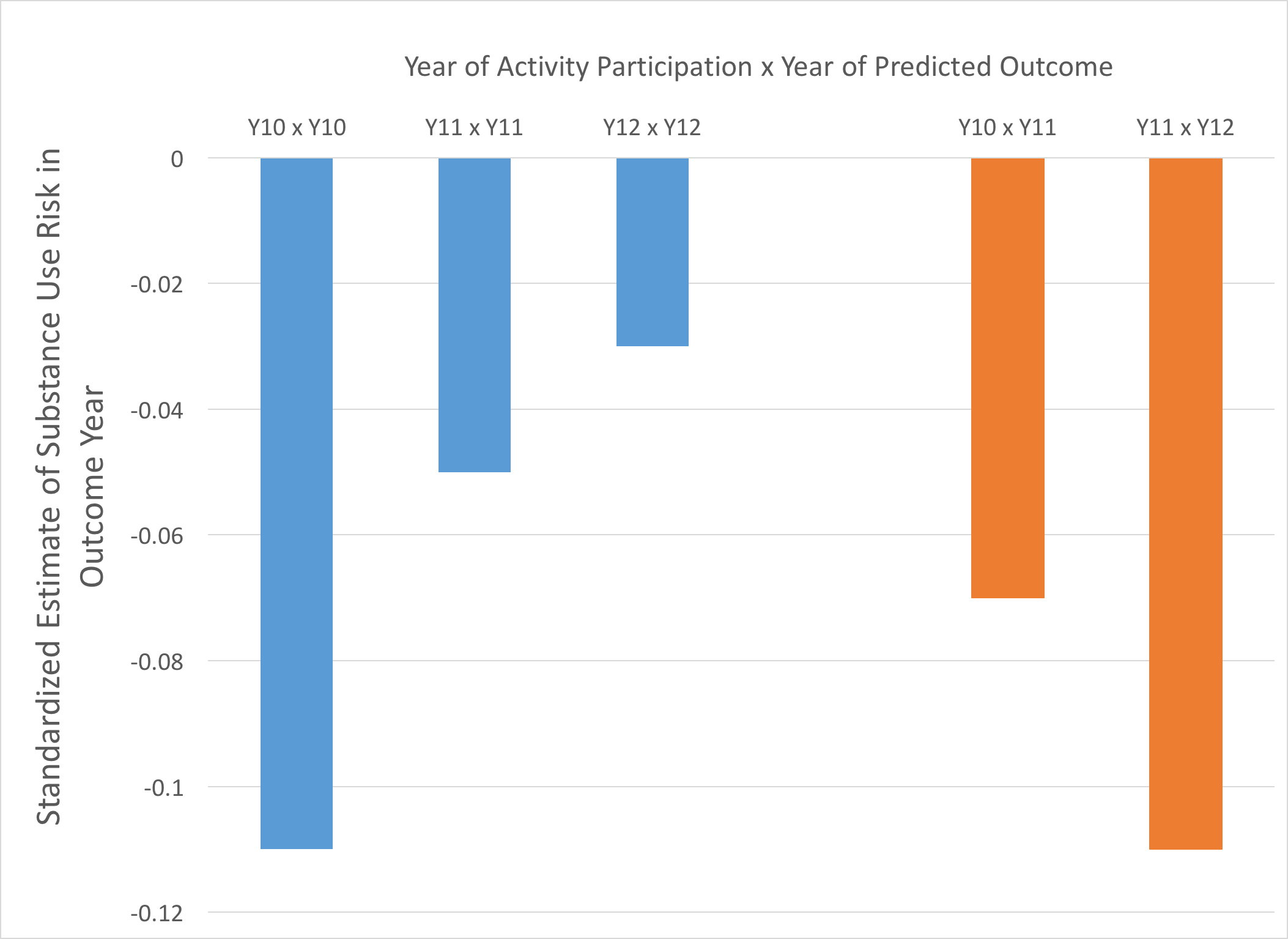STASH, Vol.13(10) – One size fits all? Extracurricular activities, substance use, and conscientiousness in adolescents
Early exposure to substance use during adolescence is tied to many negative outcomes later in life, including an increased risk of substance dependence. Adolescents who participate in non-sports extracurricular activities have been shown to be less likely to use substances than their peers. People who are more conscientious also are less likely to engage in risky substance use. So, could it be simply that these busy kids aren’t using drugs because they’re more conscientious than others? Kira McCabe and her colleagues tackled this question in a 2016 study. This week, STASH reviews their work.
What was the research question?
Is involvement in extracurricular activities linked with reduced substance use for all teens regardless of their tendency for conscientiousness?
What did the researchers do?
The researchers surveyed students at schools in Western Australia beginning when the students were in Year 10 (at an average age of 15 years old), and repeated this when the students were in Year 11 and Year 12. Surveys included questions about participation in extracurricular activities and frequency of binge drinking, getting drunk, and illegal drug use in the past 6 months. The survey also included items from the NEO-PI-R questionnaire, which measures conscientiousness as a facet of personality.
What did they find?
Students who participated in extracurricular activities tended to be more conscientious than their peers. This finding was statistically significant both while students were in Year 10 and Year 12. Even when a student’s conscientiousness was accounted for, their participation in activities at Year 10 still predicted lower risky substance use during that school year and the next. Similarly, students who participated in activities at Year 11 reported less risky substance use during Year 12 after accounting for conscientiousness. This suggests that participation in activities protects against future substance use for adolescents above and beyond conscientiousness.
Figure: Each bar in the above graph represents a prediction – that the year a student participates in activities influences substance use risk. The blue columns are predictions within the same year (e.g., activity participation in Year 10 predicting Year 10 substance use risk) whereas orange columns represent predictions of future substance use (e.g., Year 10 activity participation predicting levels of substance use during Year 11). The more negative the estimate, the stronger the association between extracurricular activity participation and reduced substance use risk. Each of these predictions account for the influence of student conscientiousness. Click image to enlarge
Why do these findings matter?
This study suggests that encouraging adolescents to participate in extracurricular activities might help protect them from engaging in risky substance use later on. More research is needed to determine what it is about participating in activities that might make teenagers less likely to use substances later in life.
Every study has limitations. What are the limitations in this study?Although the study indicates that participation in activities is associated with less substance use in the future, we still cannot say that participating in activities causes less risky behavior. Furthermore, the researchers indicated that not all extracurricular activities might have the same influence on risky behavior – participating in sports has been linked to increased substance use for teenagers in prior research. Though McCabe and her colleagues did find modest evidence that participation in sports predicted increased future substance use, further study is needed to determine how different types of activities might impact adolescent substance use.
For more information:
NIDA for Teens hosts substance-use related educational resources and self-help materials for teenagers, parents, and teachers.
— Rhiannon Chou Wiley
What do you think? Please use the comment link below to provide feedback on this article.
